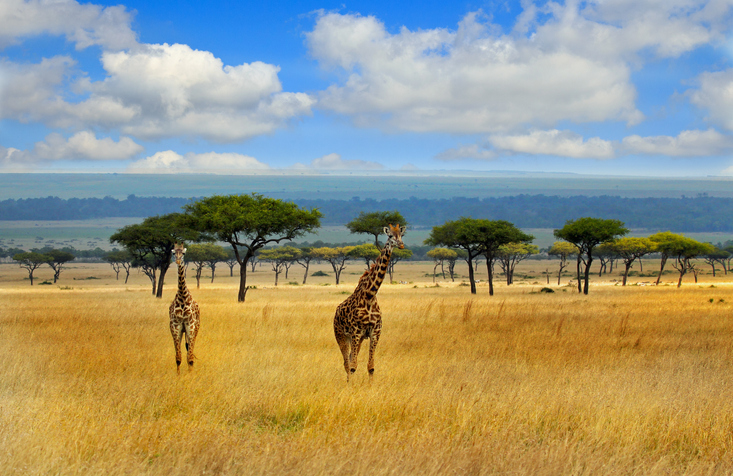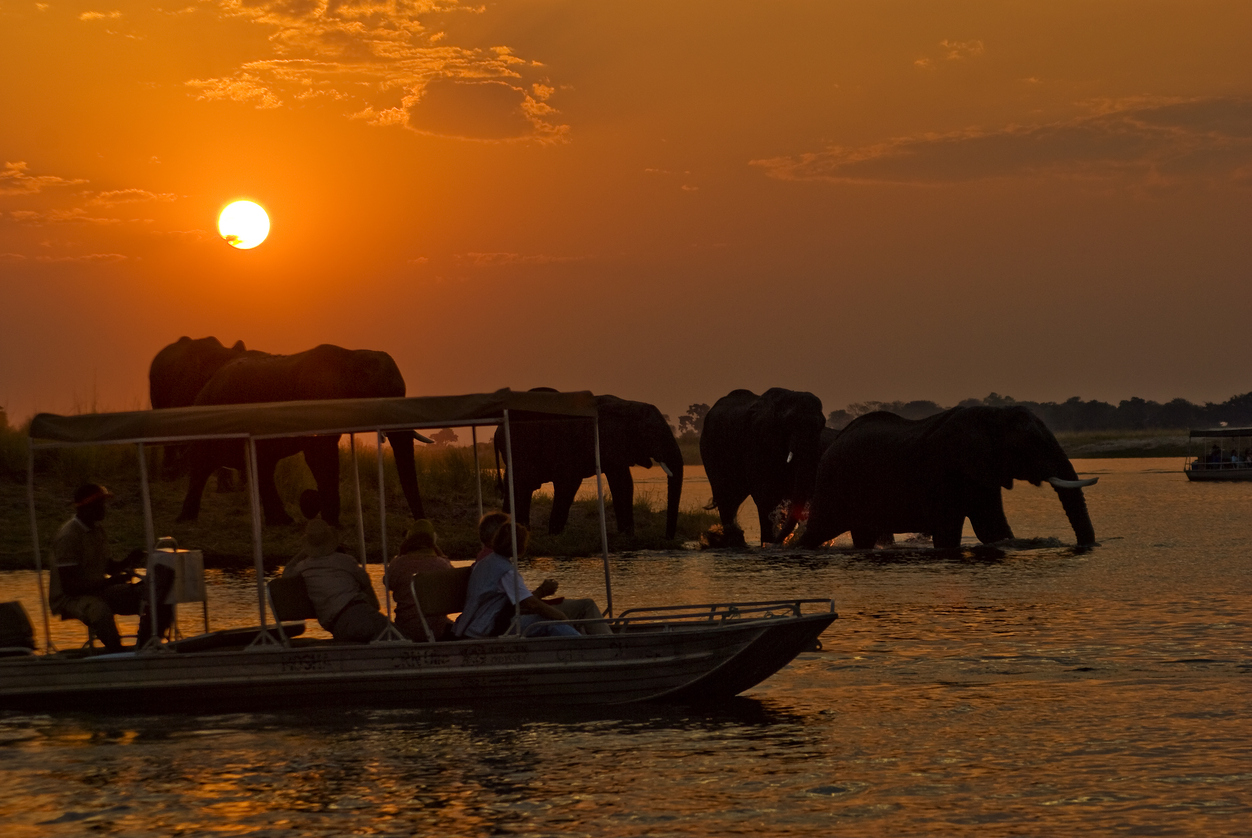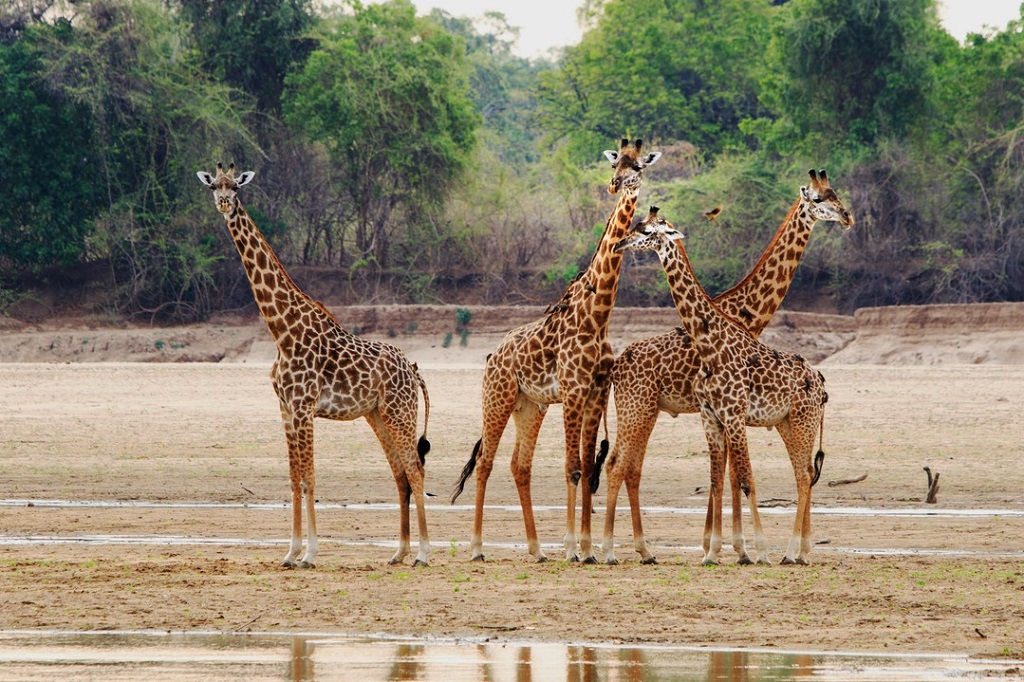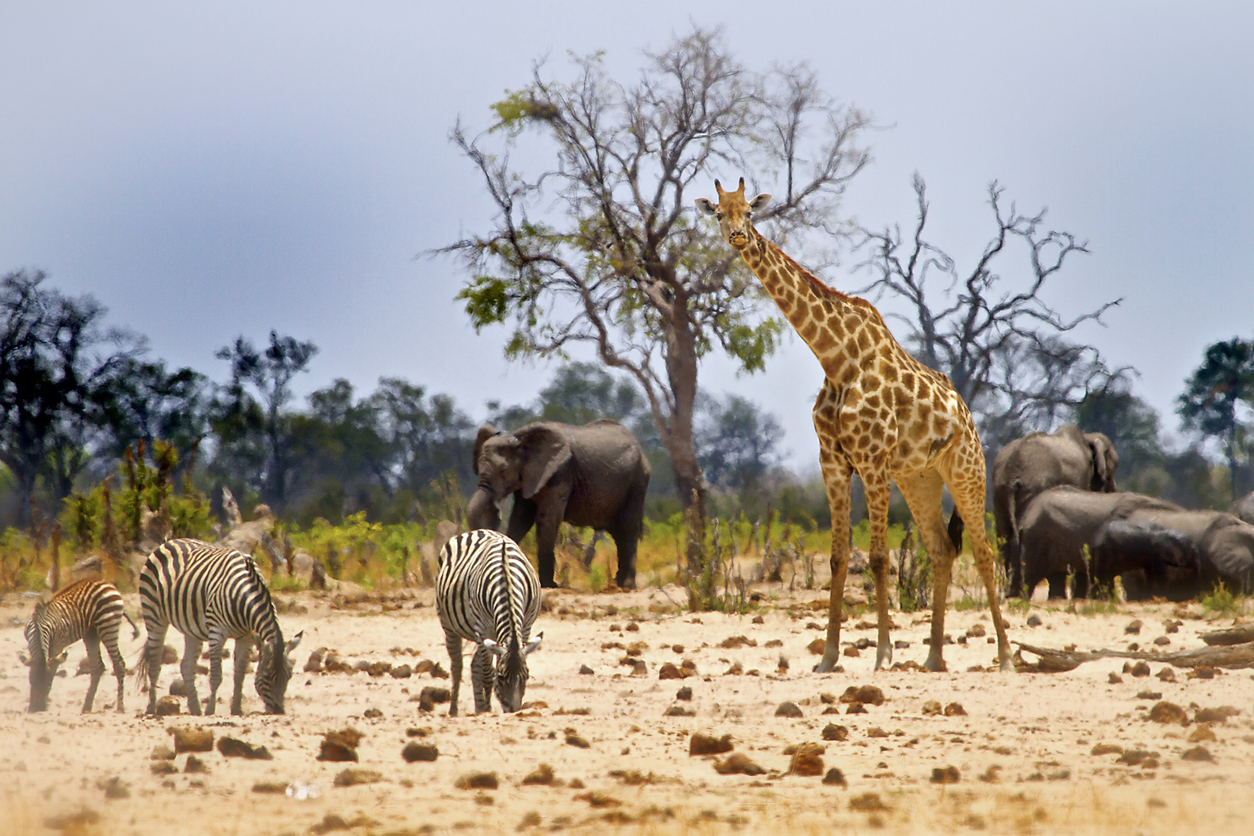The word safari comes from the Swahili word for journey. In colonial times, the implication of a safari was a big game hunt where wild animals were shot for sport by colonial rulers and lugged over by a small army of local tribespeople. Today, the definition has thankfully changed. A safari today is an overland journey or expedition, primarily undertaken by tourists, in order to observe animals in their natural habitat. Particularly famous in Africa, a traditional safari is often to observe and photograph wildlife and can include hiking and sightseeing too.
The incredible sights of Africa, from soaring sand dunes to vast savannas, allow you to experience the continent’s many wonders teeming with wildlife. It’s an opportunity to see where life on earth began, through the best safaris in Africa. Ride alongside giraffes, and maintain your distance from hyenas, all the while keeping your eyes peeled for the Big Five (elephant, rhinoceros, lion, leopard and Cape buffalo)—just some of the many treats of going on a safari in Africa.
Also read: How to be a more responsible wildlife tourist
Check Out The Best Destinations For A Safari In Africa
1. The World’s Biggest Inland Delta: Okavango Delta, Botswana

Lying at the heart of Botswana’s safari circuit, The Okavango Delta is one of Africa’s most famous safari destinations. This delta is a unique inland water system situated at the heart of Botswana’s arid Kalahari Desert. It was created at a point where the Okavango River flows into the desert basin and therefore supports an abundance of wildlife within a setting of dazzling natural beauty. The delta is home to hippopotami, crocodiles, tiger fish and bream—all living amid the lush grasslands, reed beds, lily-covered lagoons, palm groves and galleries of mopane forest.
Botswana’s Okavango Delta is protected in part by the Moremi Game Reserve and numerous private concessions. It recedes and swells throughout the year depending on the annual rain. The delta offers walking safaris along with mokoro (traditional dugout canoe) trips, considered one of the most exciting ways to explore the region. On this African safari, you can also spot unusual antelopes like puku, sitatunga and red lechwe, as well as many bird species like Pel’s fishing owl, bee-eaters and kingfisher that are endemic to the region.
Also read: 11 reasons to visit Botswana
2. Home Of Year-Round Game Viewing: Maasai Mara National Reserve, Kenya

Africa’s most popular safari destination, the Maasai Mara is located in the extreme southwest of Kenya on the border with Tanzania. This quintessential safari destination in Africa is an extension of Tanzania’s Serengeti National Park and covers over 1,500 square kilometres. Home to the Big Five, this spectacular safari in Africa boasts effortless vistas and dramatic game viewing. With its rolling grasslands, scattered acacia woodlands, and wide-open plains, it’s a sanctuary for an abundance of animals like elephant, buffalo, zebra, giraffe, hyena and Mara’s famous big cats: the lion, leopard and cheetah. The reserve is known to be the best place to see lions in their natural environment, but its topmost safari experiences include visits to traditional Maasai villages and a chance to catch the annual Great Migration that sees wildebeest, zebra and other grazers that arrive from Tanzania to Kenya across the mighty Mara river.
3. Biggest Salt Pan In Africa: Etosha National Park, Namibia

Namibia’s Etosha National Park is located in the northwestern region of the country and is one of the most significant game reserves in Africa. The name Etosha means the great white area and refers to its huge salt pan. The national park is a mix of a diverse collection of different habitats that are arranged around a vast, shimmering salt pan which can also be seen from space.
Etosha is Namibia’s most popular park, and home to Africa’s tallest elephants, the endangered black rhino, cheetah, and perennial springs that lure big cats. It’s known for its unique scenes cast across a shimmering saline pan, and the park is quite suitable for a self-driven, budget-friendly safari in Africa. While the dry season brings in a large concentration of animals, the rainy season brings lush growth and flamingos flocking to its temporary lagoons. Visit Etosha’s spring-fed water holes that provide a rare opportunity for nighttime wildlife viewing.
4. One Of Africa’s Largest Game Reserves: Kruger National Park, South Africa

Located in the northeast of South Africa on the Mozambique border, Kruger National Park is one of Africa’s oldest and best-maintained parks. Covering an area of 19,485 square kilometres, the park is the most famous of all South Africa’s many game reserves. It supports a huge variety of wildlife including the Big Five, vulnerable cheetah, the endangered wild dog, several elusive small cat species, along with numerous large herbivores, and 500-plus bird species. Kruger will offer you a variety of habitats to explore, from hills and savannah to woodland and riverine forest. With its comprehensive road network, it is also one of the best parks for self-driven safaris. The park also offers sophisticated lodges and intimate bush hideaways that will make your African wildlife safari experience nothing short of incredible.
Also read: When you’re in South Africa, forget the car, do a walking safari!
5. Classic African Scenery: Serengeti National Park, Tanzania

Located in northern Tanzania, and sharing a border with Kenya’s Maasai Mara National Reserve, Serengeti National Park is synonymous with wildlife and classic African scenery. The Park is a Unesco World Heritage Site and Tanzania’s oldest park. Comprising 15,000 square kilometres of savannah, the Serengeti is also known for the Annual Migration. One of the most impressive nature spectacles in the world, you’ll see 1.5 million wildebeest, hundreds of thousands of gazelles and zebras, followed by their predators, migrating through the country in search of pasture and water. The greater habitat variety of this magnificent park allows you to view the pride of lions along with at least four globally threatened or endangered animal species: the black rhinoceros, elephant, wild dog, and cheetah. The Grumeti River in the park houses some of the largest Nile crocodiles in the world.
Also read: 10 things to do when in Tanzania
6. The Land Of The Giants: Chobe National Park, Botswana

Lying adjacent to the Okavango Delta, Chobe National Park is one of the great wildlife destinations of Africa. It is situated alongside a brilliant peacock-blue river, Chobe, and is considered Botswana’s first National Park. The Park covers more than 10,000 square kilometres of rich ecosystems, diverse landscapes, and an almost unparalleled abundance of wildlife and birdlife. Known to be one of Africa’s most densely populated game reserves, Chobe National Park is home to Africa’s largest elephant population. It offers great lion and leopard sightings, and an abundance of hippopotamus, crocodiles, zebras, spotted hyenas, impala, and blue wildebeest among others.
Prepare yourself for spectacular encounters with big herds of buffalo, and the slightly odd leguaan (the second-longest lizard in Africa). The river also allows mokoro (dugout canoe) trips down its narrow channels that offer unique game-viewing and rewarding birding. Don’t miss out on the park’s Savuti Marsh which offers one of Africa’s highest year-round concentrations of wildlife.
7. Visit Critically Endangered Mountain Gorillas: Bwindi Impenetrable National Park, Uganda

Located in south-western Uganda, Bwindi Impenetrable National Park is gifted with a dramatic landscape, and volcanoes that intersperse jagged valleys, mist-covered hillsides and waterfalls. The park is spread over 331 square kilometres and is blanketed by one of Uganda’s oldest and most biologically diverse rainforests. This dense rainforest is home to almost 400 species of plants along with nearly half of the world’s population of mountain gorillas, a critically endangered subspecies, including several habituated groups.
Here, you can track these habituated gorilla groups on foot, allowing you to come face-to-face with the gentle giants. However, keep in mind that gorilla trekking permits are compulsory, and must be booked well in advance. This biologically diverse region is also home to more than 120 mammals, including several primate species such as chimpanzees, baboons elephants and antelope. The forest is home to 350 species of birds, including 23 of Uganda’s 24 Albertine Rift endemics.
8. Zambia’s Most-visited Park: South Luangwa National Park, Zambia

Located in Eastern Zambia, South Luangwa National Park has been dubbed as one of the greatest wildlife sanctuaries in the world by experts. Locally known as South Park, the National Park was initially founded as the Luangwa Game Park in 1904 and converted to one of three game reserves in 1938. This impressive park covers an area of about 9,050 square kilometres and hosts a wide variety of wildlife, birds and vegetation.
Famous for its walking tours, the park is sustained by the Luangwa River that winds its way through the middle, leaving a spectacular ridge, a wealth of lagoons and oxbow lakes in its wake. For your African safari bucket list, the park is home to 60 mammal species, including four of the Big Five, about 400 of Zambia’s 732 species of birds, Crawshay’s zebra herds, 14 different species of antelope, including the elusive bushbuck, and the attractive kudu. If you visit towards the end of the dry season, the park’s game congregates in great numbers around the shrinking river and its hippopotamus-choked lagoons.
9. One Of The World’s Last Great Elephant Sanctuaries: Hwange National Park, Zimbabwe

Located in Zimbabwe’s northwest region, Hwange National Park is the largest and most popular park in Zimbabwe. It covers 14,650 square kilometres and offers excellent wildlife viewing. With more animals and a greater variety of species—107—more than any other park in the country, the park has the biggest diversity of mammals of all the world’s national parks. The park is famed for its elephant population, one of the world’s largest, and is home to more than 400 species of birds, large herds of buffalo, the elusive African wild dog, the Big Five, and rare species such as roan and sable. As the park is between Bulawayo and Victoria Falls, the mighty Zambezi River from the falls creates waterholes for thirsty wildlife. The park also offers private game lodges and a variety of safari options such as walking safaris, horseback safaris and night safaris.
Get Into The Cradle Of Life With These Safaris Of Africa
Commit to your bucket list vacation and witness nature free from human intervention. No matter what your expertise level is, the thrill of an African safari will definitely not disappoint. Take in the stillness of the morning, the wild calls of the night and the sense of peace that comes with being surrounded by untamed wilderness. Go on an exciting adventure with these safaris in Africa and let us about it in the comments below.
Also Read: How to go on ethical safaris in Africa


